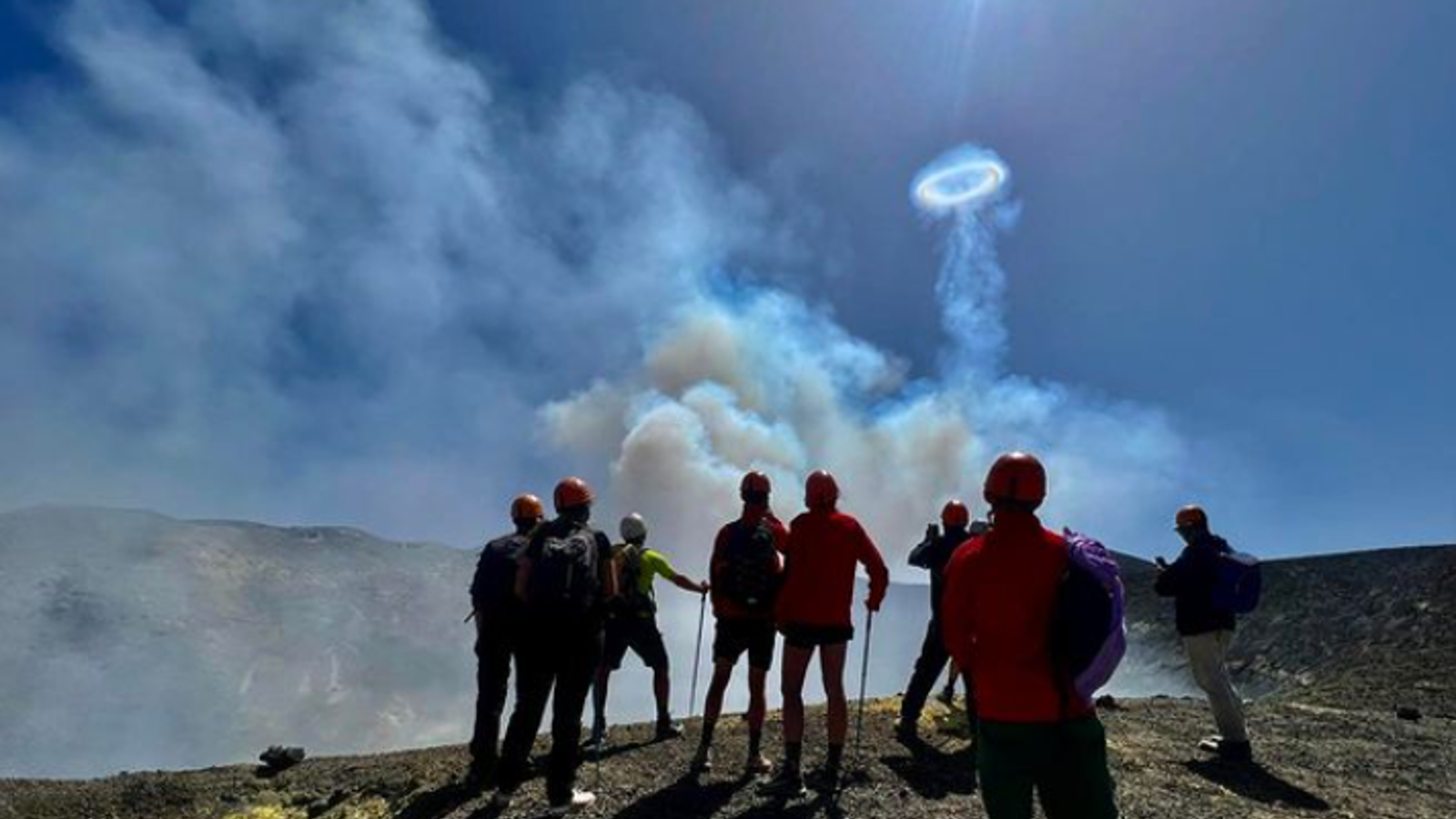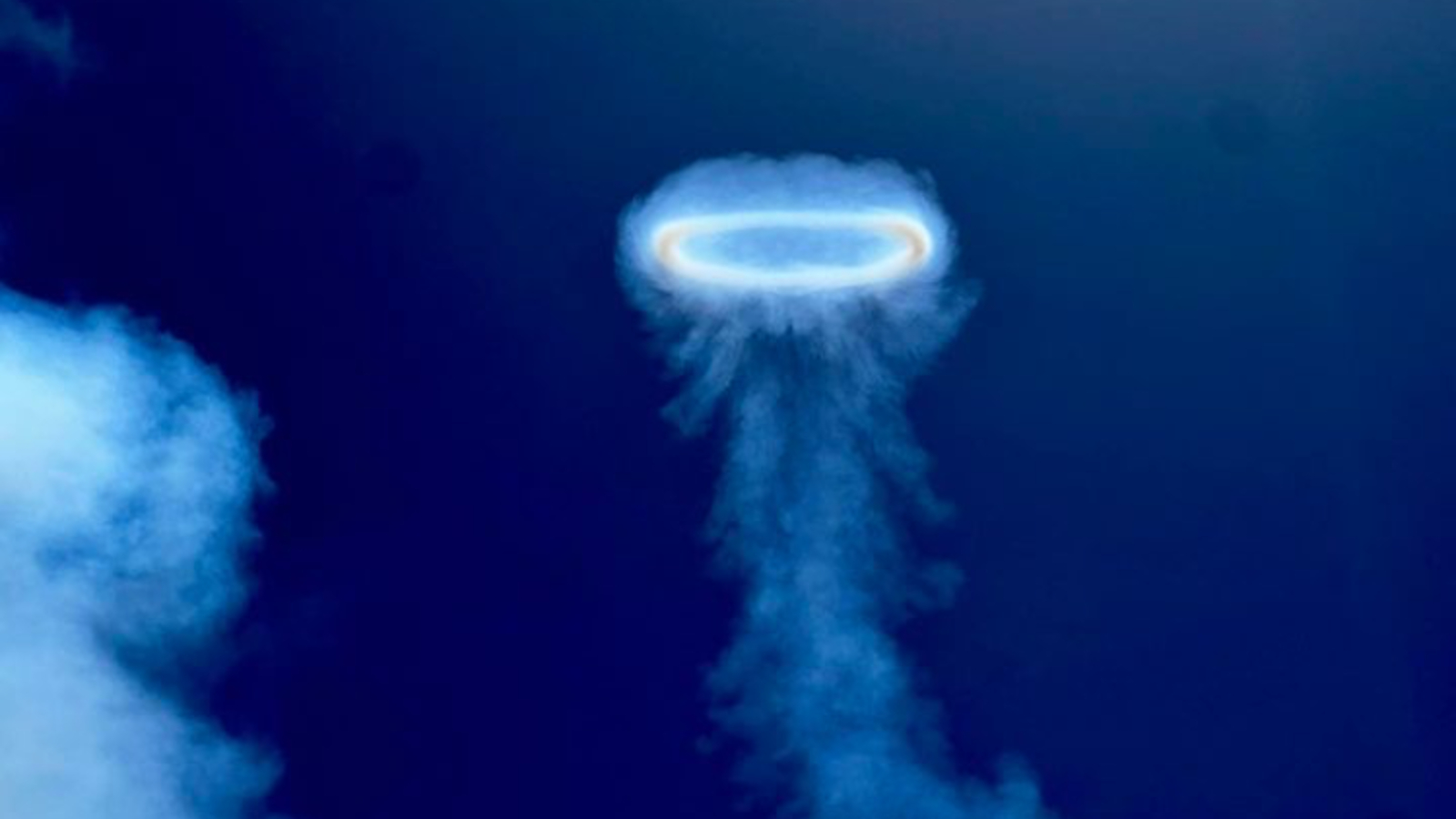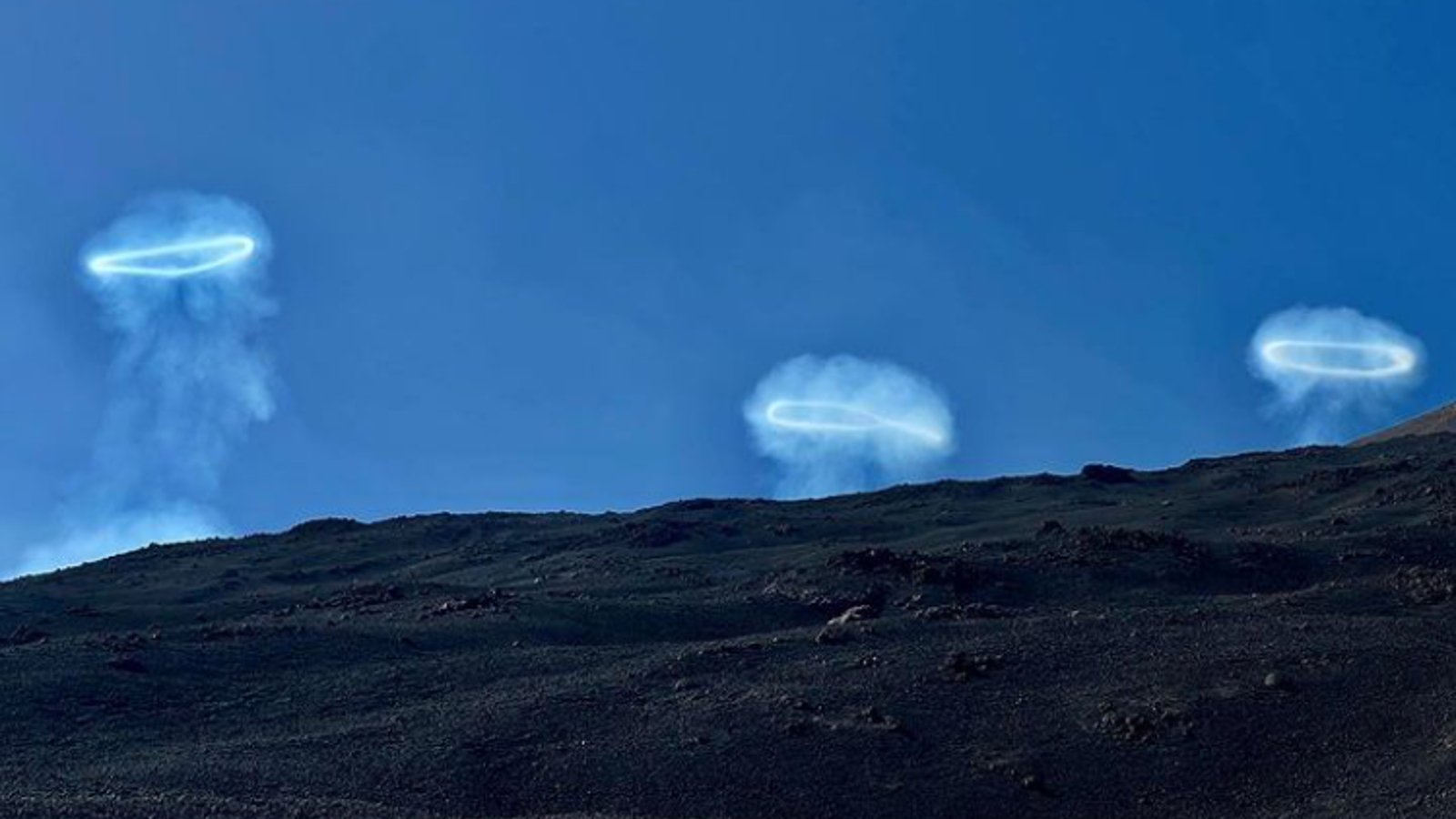One of the world's most active volcanoes is spewing out weird rings of smoke
Dozens of circular loops made from smoke and volcanic gas are rising from a peculiar vent on Mount Etna every day.

Europe's most active volcano, Mount Etna, is blowing scores of ethereal "vortex rings" every day from a single vent located in one of its most active craters.
On July 23, Boris Behncke, a volcanologist with Italy's National Institute of Geophysics and Volcanology who is based in Sicily alongside Mount Etna, wrote on Twitter that the volcano had been "releasing dozens of gas rings" from a single vent in Bocca Nuova crater for around a week and shows no signs of stopping.
Vortex rings are made from a mix of smoke, steam and other gases released from volcanic vents at high speeds. They can remain airborne for several minutes before eventually disappearing.
Photographer Luca Cosma, who also runs the tour company Etna Hiker, snapped a series of stunning pictures of the vortex rings on July 23 while escorting a group to the Bocca Nuova crater.
Related: Striking bull's-eye-shaped clouds form above erupting La Palma volcano

"Such gas rings are produced by the explosion of gas bubbles within a narrow conduit [above a magma chamber], which shoots the gas at high speed toward the surface," Behncke wrote on Twitter. "Attrition along the conduit walls slows the movement of the gas jet, relative to the center of the conduit," which is what forms the ring shape, he added.
Mount Etna produces more vortex rings than any other volcano in the world, Behncke wrote. The Sicilian volcano spits out the gaseous loops most years, but the number of the rings varies every year. In 2000, the volcano released around 5,000 — the most on record — and the current rate is similar to that period, he added.
Sign up for the Live Science daily newsletter now
Get the world’s most fascinating discoveries delivered straight to your inbox.
Vortex rings have also been observed at other volcanoes, such as Mount Stromboli, which sits on an island just north of Sicily. But they are rare elsewhere.

The secret to Etna's vortex rings is likely the shape of the conduit below the vent inside the Bocca Nuova crater. In a study published Feb. 9 in the journal Scientific Reports, researchers simulated vortex rings using a computer model and found that perfect rings required "a combination of fast gas release from gas bubbles at the top of the magma conduit and regularity in the shape of the emitting vent."
Vortex rings are not the only unusual signs of activity recently spotted at Mount Etna. On July 20, a new vent opened up in the Bocca Nuova crater, Behncke wrote on Twitter. This hole is known as a "breathing vent," because gas appears to rhythmically pulse out of the opening as if it were breathing. Two minor eruptions, which briefly spit out small clouds of ash, were also spotted at the volcano's Southeast Crater on July 10 and July 14, according to Volcano Discovery, a site that tracks volcanic eruptions.
However, none of the recent activity means that a major eruption is imminent, Behncke wrote.

Harry is a U.K.-based senior staff writer at Live Science. He studied marine biology at the University of Exeter before training to become a journalist. He covers a wide range of topics including space exploration, planetary science, space weather, climate change, animal behavior and paleontology. His recent work on the solar maximum won "best space submission" at the 2024 Aerospace Media Awards and was shortlisted in the "top scoop" category at the NCTJ Awards for Excellence in 2023. He also writes Live Science's weekly Earth from space series.










